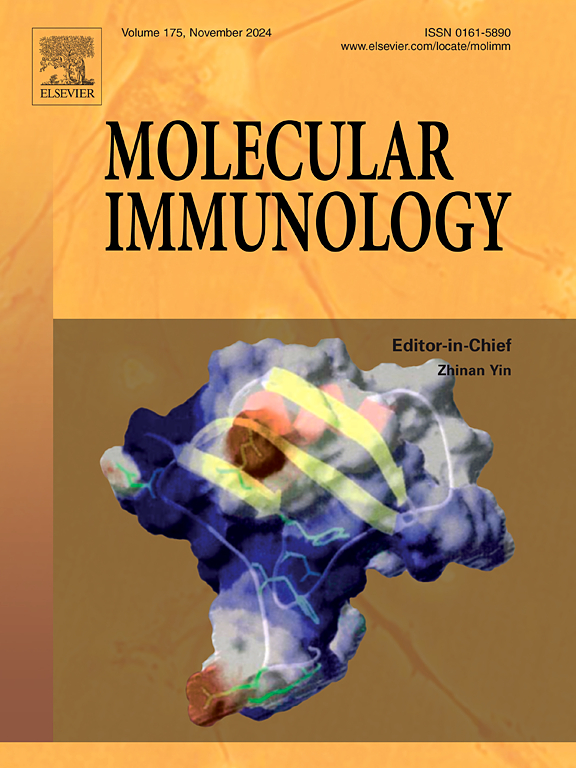CRISPR-Cas9 engineering of human T regulatory cells – Design and optimization of a manufacturing process
IF 3
3区 医学
Q2 BIOCHEMISTRY & MOLECULAR BIOLOGY
引用次数: 0
Abstract
Regulatory T cells (Tregs) are a subset of CD4 + T cells that comprise 5–10 % of the total CD4 + T cell population. Tregs, which are critically important for the maintenance of immune tolerance and immune homeostasis, are distinguished from other subtypes of CD4 + T cells by the expression of the transcription factor FOXP3. Because of the centrality to immunoregulation, Tregs have gained increasing attention as promising targets for clinical applications in autoimmune diseases, transplant rejection and graft-versus-host disease (GvHD). However, the essential role of Tregs in the complex network of the immune system implies their targeting as a promising therapeutic approach also in other medical indications, such as neurodegenerative diseases and cancer. Our group recently published a study showing that genetically modified Tregs are capable of clearing solid malignancies in various mice models, including an aggressive triple negative breast cancer (TNBC) and prostate cancer, which provides the impetus to develop an adoptive cell therapy using Steroid Receptor Coactivator 3 (SRC-3) knock out (KO) Tregs. It is well known that isolation, genetic editing and the expansion of Tregs as a homogenous and healthy population present specific technical challenges. In this context, here we outline the development of a process for the production of SRC-3 KO human Tregs (hTregs), which can subsequently be adapted for Current Good Manufacturing Practice (cGMP) settings to facilitate clinical-scale production.
人类T调节性细胞的CRISPR-Cas9工程-制造工艺的设计和优化
调节性T细胞(Tregs)是CD4 + T细胞的一个子集,占CD4 + T细胞总数的5 - %。Tregs对维持免疫耐受和免疫稳态至关重要,通过表达转录因子FOXP3与其他CD4 + T细胞亚型区分开来。由于Tregs在免疫调节中的中心地位,作为自身免疫性疾病、移植排斥和移植物抗宿主病(GvHD)临床应用的有希望的靶点,Tregs越来越受到关注。然而,Tregs在免疫系统复杂网络中的重要作用意味着它们在其他医学适应症(如神经退行性疾病和癌症)中的靶向治疗方法也很有前景。我们小组最近发表的一项研究表明,转基因Tregs能够清除各种小鼠模型中的实体恶性肿瘤,包括侵袭性三阴性乳腺癌(TNBC)和前列腺癌,这为开发使用类固醇受体共激活因子3 (SRC-3)敲除(KO) Tregs的过继细胞疗法提供了动力。众所周知,分离、基因编辑和treg作为同质和健康群体的扩展带来了具体的技术挑战。在此背景下,我们概述了SRC-3 KO人Tregs (hTregs)生产工艺的发展,该工艺随后可适用于现行良好生产规范(cGMP)设置,以促进临床规模生产。
本文章由计算机程序翻译,如有差异,请以英文原文为准。
求助全文
约1分钟内获得全文
求助全文
来源期刊

Molecular immunology
医学-免疫学
CiteScore
6.90
自引率
2.80%
发文量
324
审稿时长
50 days
期刊介绍:
Molecular Immunology publishes original articles, reviews and commentaries on all areas of immunology, with a particular focus on description of cellular, biochemical or genetic mechanisms underlying immunological phenomena. Studies on all model organisms, from invertebrates to humans, are suitable. Examples include, but are not restricted to:
Infection, autoimmunity, transplantation, immunodeficiencies, inflammation and tumor immunology
Mechanisms of induction, regulation and termination of innate and adaptive immunity
Intercellular communication, cooperation and regulation
Intracellular mechanisms of immunity (endocytosis, protein trafficking, pathogen recognition, antigen presentation, etc)
Mechanisms of action of the cells and molecules of the immune system
Structural analysis
Development of the immune system
Comparative immunology and evolution of the immune system
"Omics" studies and bioinformatics
Vaccines, biotechnology and therapeutic manipulation of the immune system (therapeutic antibodies, cytokines, cellular therapies, etc)
Technical developments.
 求助内容:
求助内容: 应助结果提醒方式:
应助结果提醒方式:


